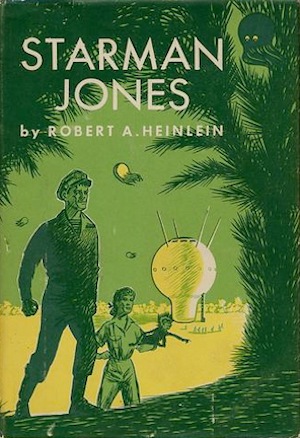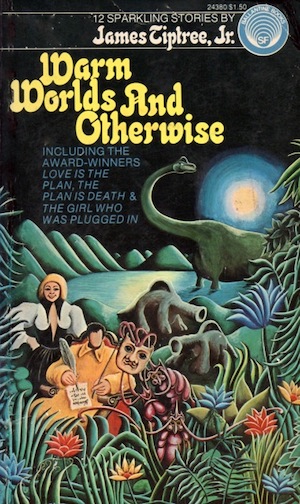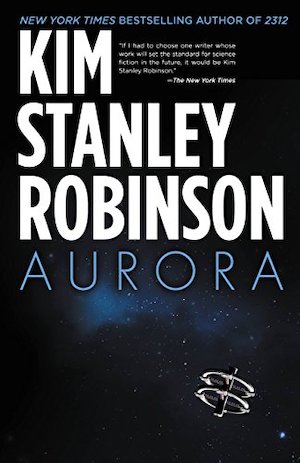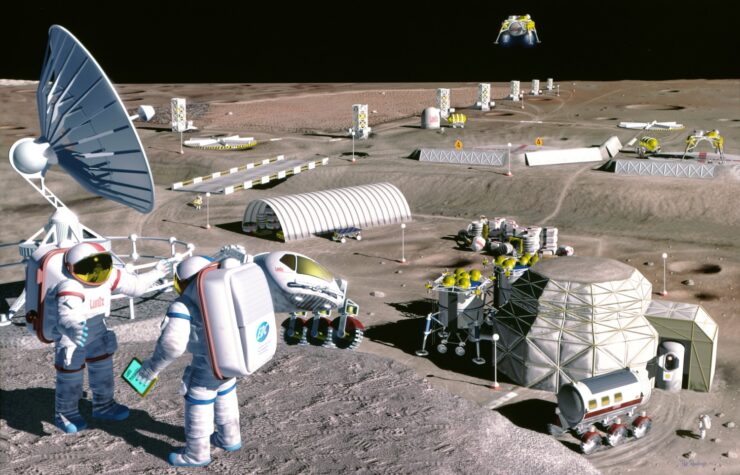While perusing the latest edition of the tabletop roleplaying game 2300 AD1, this passage caught my attention:
While the major nations were negotiating the terms of the Melbourne Accords, other groups worked to bypass the emerging treaty. Termed ‘Jumpers’ by British press (for ‘jumping the queue’), these were often dissident or minority cultural or religious groups, fleeing persecution or the perception of it. (…). Many Jumper groups expanded to stars within 20 light years, the practical limit for early drives, but few survived. The alien worlds they attempted to settle were simply too hostile for the limited resources and support they could bring to bear. The lucky ones were able to return to Earth, while unlucky colonists simply disappeared, overwhelmed and swallowed by the worlds they thought to rule.
Given that alien worlds will tend to be, well, quite alien, and settlements on Earth, the planet on which humans evolved, have been known to collapse and vanish in the face of calamity, this passage seems quite plausible. It is not surprising that a significant part of the current edition of the game touches on the technologies required to survive on other worlds, and what social effects these enabling technologies might have. Nor is it surprising that SF authors have sometimes turned to what I will call “premature settlement” for inspiration.2
Starman Jones by Robert Heinlein (1953)

Frustrated farm boy Max Jones abandons his vapid stepmother and her latest beau for a life among the stars. At least, that’s the plan… Max’s lack of credentials in the guild-dominated Earth of tomorrow dooms his ambition to join the starfarers’ guild. It falls to Max’s ethically flexible pal Sam Anderson to wangle berths on starship Asgard through the power of applied lying.
A navigational mishap maroons Asgard in a hitherto unknown system. Unless Asgard can find its way home—if, say, a former farm boy turns out to have a cognitive knack seemingly designed to fulfil a very specific plot need—the crew and passengers will live the rest of their lives on the unfamiliar alien world. As the planet in question already has owners who have little interest in sharing, those lives could be quite short.
Heinlein has something of reputation for placing humans above all other beings in his fiction. However, several of his pre-Starship Troopers works feature aliens that humans are well advised to treat with respect and caution (lest humans discover the hard way the full extent of the aliens’ abilities). Starman Jones is such a novel.
“On the Last Afternoon” by James Tiptree, Jr. (1972)

(Collected in Warm Worlds and Otherwise and Her Smoke Rose Up Forever) Their ship irreparably damaged, Mysha and his fellow humans were forced to set down on an alien world. The surface of the world appeared relentlessly hostile until—at the very last moment—a convenient clearing appeared, a clearing where they could safely land and build their new community.
The human castaways assumed that the clearing was due to a tornado. This is not, in fact, the cause. The unfortunate settlers are about to get firsthand experience of the thing that cleared the forest. Unless they can produce a miracle at the last moment, the experience is likely to be the humans’ last.
Readers will be cheered to discover that humanity survives the calamitous events of this story… in the same way that humanity survives the events of Joanna Russ’ We Who Are About To…
The Keeper of the Isis Light by Monica Hughes (1980)

The class-B, marginally habitable planet Isis has but two inhabitants: robot Guardian and young orphan Olwen Pendennis. Olwen accepts her solitary circumstances as normal. The impending arrival of a starship packed to the gunnels with colonists promises unwelcome change.
As the newcomers discover firsthand, almost all of Isis is uninhabitable absent certain advanced technologies not immediately available to the colonists. Clad in an environment suit to protect her from the colonists, Olwen does her best to provide the newcomers with guidance. Alas, the promising arrangement is imperiled when the settlers discover precisely how it is the young girl has survived on the hostile alien world.3
While this colony doesn’t totally fail, there aren’t all that many settlers and they are confined to a single, specific region from which egress is impractical. On Earth, a species with such constrained numbers and restricted location would be seen as endangered. Making matters even worse is the fact that this group of settlers is somewhat lacking in ingenuity and willingness to change and adapt.
Aurora by Kim Stanley Robinson (2015)

Seven generations after launch, an aging generation starship approaches Tau Ceti. The original crew hoped that their descendants would found a new community on the potentially habitable world known to be orbiting Tau Ceti. Said descendants, having been involuntarily drafted into the effort through the misfortune of having selected the wrong ancestors, are rather less enthusiastic about the whole settling-an-alien-world concept.
The good news: Tau Ceti does indeed have at least one potentially habitable world. The bad news: there is a huge gap between “potentially habitable” and “actually habitable.” It is in no way clear that the involuntary settlers have the correct combination of technology, ingenuity, and leeway for error to bridge the gap. The only alternative is to return to the Solar System, a task that may be as beyond their limited abilities as settling an unfamiliar world.
Rather than dwell on the hilarious science errors scattered throughout this jeremiad against space colonies as a coping mechanism for climate change, I will admit there are two factors that legitimately doom this effort. First, that two thousand people is too few to ensure survival after the inevitable setbacks. Second, that these folks are for the most part incurious nincompoops whose failure is as foreordained as that of any Robert Sheckley characters. Unlike Sheckley’s works, this novel does not seem to have been intended as comedy.
The Scourge Between Stars by Ness Brown (2023)

Having abandoned the Earth as irredeemably damaged, the Calypso and the rest of the Goddess Flotilla set off for Proxima. Proxima b proved beyond the would-be settlers’ ability to colonize. The disheartened crew of the Calypso reluctantly abandoned efforts to turn Proxima b into a new home and set off to see if Earth was quite as hopeless as their ancestors thought.
The return voyage is far slower than the outward journey. More time for aging starships to fail and fall silent. Whether their ingenuity will be sufficient to keep Calypso functioning long enough to discover what has become of Earth is a question that concerns the crew. Thanks to an alien stowaway, insufficiently closed life-support loops are the least of their problems.
There are some basic rules that would-be colonists should follow to enhance their odds of survival. First, don’t go haring off to an unknown world on a generation ship with only a handful of colonists armed with untested colonization methods. Second, try very hard not to be written by James Tiptree, Jr. or (arguably worse) a depressed John Brunner.4 Third—and this is the mistake the crew of Calypso makes—don’t be characters in a horror novel.
These are only a few of the heartwarming tales SF authors have spun about intrepid colonists boldly settling hostile worlds…then failing thanks to insufficient technology and resources. While this is not a large subgenre (see footnote two), there are certainly other examples not mentioned here. If I missed your particular favourite—such as that Poul Anderson story; you know the one I mean—feel free to mention it in comments below.
- 2300 AD is the game whose three-dimensional map you may recall me praising in a previous entry on this site. I was recently delighted to see that someone has created a resource that handles the heavy lifting of working out routes from interstellar origin to interstellar destination.
- Not all that many books about premature settlement, because failed settlements are a bit of a downer.
- I’ll just reassure readers now that the method used is not the one so memorably deployed in John Wyndham’s “Survival.”: “Look, baby,” she said. “Look there! Food! Lovely food….”
- Why, yes, I did just read Brunner’s Total Eclipse. Why do you ask?











Cover artists for the Monica Hughes have an interesting choice: either reveal a significant spoiler for the story, mislead the reader, or somehow conceal the spoiler. In this case, the artist has done one of those.
That’s why I like Michael Whelan covers. He would read the entire book then select what he was going to paint, and do an accurate job of it. No brown haired characters with blond hair in the cover art! His floating city in his cover for “The Ringworld Engineers” can be used as a map to follow Louis Wu’s movements in that part of the book.
John Berkey covers were just pretty bling. Put a spaceship here, shooting at something over there, everything the same swoopy style with lots of exposed greeblies and a bunch of exhaust nozzles at the back. Designed to attract the eye while telling nothing about the story within. There have been other artists who did similar style spacecraft, to where one has to look for the signature to tell if it’s by Berkey or not.
Not complete failures, but…
“Four Day Planet” by Piper has a planet that is only inhabitable in underground cities. Well, one city. A medium sized town, really.
Pern, in McCaffrey’s dragonrider books. The colony survives, but loses so much civilization that a future expedition writes it off as a total failure.
“Sentenced to Prism” by Foster. Not a colony so much as a research station, which gets almost totally wiped out by the local lifeforms.
“Mid-World”, also by Foster. The colony survives, sort of, but only by developing a symbiotic relationship with the planet.
“Legacy of Heorot” by Barnes, Niven, and Pournelle. Colony almost gets wiped out by a local lifeform that is very numerous, very hungry, and finds humans very tasty.
Can you expand or give some more hints about the Pern reference? I’ve only read the the original trilogy, the Harper Hall trilogy, and Moreta, and I don’t remember anything like that.
Dragonsdawn and the short story “Rescue Run” cover those details. Essentially, Pern (Planet Earthlike, Negligible Resources ) was given to a bunch of pastoral types to live a low-industrial lifestyle because it was out of the way and had few heavy metals. Then Thread happened, the original colony site had to be abandoned, and everyone went underground, literally. Someone actvated a distress beacon, a rescue ship showed up a few years later cos interstellar distances, they found a pathetic remnant of schismatic colonists who said as far as they knew Thread killed everyone else. So the ship went home, Pern was listed as uninhabitable, and a thousand years later (IIRC) nobody ever came back and we have the Pern of the original trilogy.
Thanks for the summary! I wonder if anybody on Pern ever missed the above-ground colonists :)
PERN = Parallels Earth, Resources Negligible
The rescue ship came to the southern continent, after everyone but that one family had pulled up stakes and moved to the north continent, where there were many natural volcanic caves they could expand into shelters against Thread, and homes for the rideable dragons they’d genetically engineered from the fire lizards.
Finding the destruction of the original colony site caused by the volcano, and everything else abandoned, the rescue ship took the survivors aboard and left. Nobody came back, and with Anne’s death, it’s likely nobody ever will unless Todd or Gigi write in that universe.
Mid-World got a follow up after ADF actually visited a rain forest. I need to track that down at some point.
Are the other ADF books involving Midworld?
“Mid-Flinx”. Outsiders cause trouble, get eaten by the flora. And occasionally the fauna.
Stableford had any number of failed worlds, not to mention a few where the settlers might have been better off had they failed. The big question in his Daedelus series was not if any colonies failed but if any had survived.
“don’t be characters in a horror novel” seems like advice that has a wider application.
Words to live by.
Of recent vintage, Michael Mammay’s Generation Ship also features something of a colonization failure.
Adrian Tchaikovsky’s Children of Time features both a failed colonization attempt by humans, but a very successful attempt by uplifted spiders.
and the third book in Tchaikovsky’s series, Children of Memory, addresses another sort of failing colony
In J. T. McIntosh’s “First Lady”, the attempt isn’t known to be unsuccessful — but the chaperones of the first female colonist are expecting it to be. In the end, they question their roles as Judas goats, but not the sexism or social Darwinism that are the skeleton of much of McIntosh’s work.
The end of Paul Tabori’s The Green Rain is a vision of insufficiently self-supporting Moon colonists looking up at the Earth, and knowing that they’ll die out even though the ~inverse-ecodisaster that has overtaken Earth can’t touch them.
Colin Kapp’s The Survival Game mostly takes place on a world whose last colonist (-descendant?) was taken off some years ago, driven by dangerous flora and fauna; however, Our Hero Uses Technology to triumph. (The Campbellian frame of old ignorant non-Terrans versus the young-vigorous-and-imaginative Us isn’t good but isn’t hammered as Campbell authors sometimes did.)
Was that the one with a spaceman fending off a legion of crabs on the cover? Art by Van Dongen, maybe?
,
More-or-less spaceman — he’s down to rags, but there’s something like a lander in the midground — but yes on the crabs and the artist. (It’s old enough that the art might not have been credited, but it was a Ballantine book so it was.)
In Richard McKenna’s “Hunter, Come Home”, a group of masculinist throwback hunters(*) try to clear enough space to make a reserve for the beasts there’s no longer enough room for on their world; they fail. Two people without the slash-and-burn attitude succeed, but it’s not clear they’ll Adam-and-Eve their survival into a new colony.
I think it’s fairly clear that a ‘colony’ as such isn’t what you’d ever get out of that world. They might grow into… a component of the ecosystem, an organ of the forest, but that would be no more a colony than any of the biome’s other species is a colony. When a whole ecosystem turns on you, there isn’t usually very much you can do, particularly if you treat all the people who can fix the problem with contempt because they’re not manly enough.
(I used to wish there had been a sequel to that, but it’s hard to see what sort of sequel there could be.)
(*) I don’t know whether Julian May, who was certainly old enough to have read this when it came out, was thinking of it when she had the Tanu come to Earth (setting up the Saga of Pliocene Exile) to be able to continue the violent contests their society rejected.
Remnant Population by Elizabeth Moon is not precisely about a failed colonization attempt, but it is background to the actual plot. It becomes increasingly clear that the megacorp that founded the colony had no clue what it was doing–but then, neither did the colonists it hired to do the job. Instead of periodic assessment and retrenching, they just went along in the same old way until the megacorp decided to ship them all out. The protagonist, who stayed behind, decides to write an analysis of what went wrong and store it in the colony database, in hopes that it might be useful.
I would say that a key lesson of space ark stories is “don’t set off on a five hundred-year journey until after space habitats and/or deep cryosuspension have been proven by five hundred years of experience”.
And, of course, “don’t be created by Harlan Ellison and produced for television by Canadians”. :-)
I rewatched that series…twice… for review. In one episode a deranged scientist (the only variety found on the ark) steers the arc into a swarm of meteors or comets or something to get a better look. Unless the ship was subsequently aimed back at the target star, the ark was no longer in peril of running into the star. None of the leads seem to have realized that.
Bova spoke at a Boskone about being hired as science advisor for that show, and as far as he could tell being completely ignored except for the opening not showing a sailing ship’s spoked wooden steering wheel in the middle of the control room.
Condolences. I managed to type a letter to Bill Musselwhite at the Calgary Herald, who’d slagged Starlost in a review. I was outraged. In my opinion of the time, there was just no SF available, Star Trek having ended, and all SF had to be welcomed and praised. (I kind of had the same attitude as a mom watching her kid’s first piano recital.)
Bill actually wrote me back, though he could clearly tell I was a kid; and had done his own typing, since it wasn’t official Herald work, I guess. He defended his trashing quite well, and after I read Ellison’s “Starcrossed” some years later, I accepted the facts.
I should reread Aurora some time – I was deeply disappointed when it came out because I didn’t know it was ending in failure, and so was expecting an entirely different sort of book. I feel like coming back to it knowing what sort of theme it was going for would have helped a lot with the experience.
Charlie Jane Anders’ The City in the Middle of the Night features a marginal colony world that appears to be failing due to a deteriorating technology base. The prologue implies that the world reconnects with other inhabited systems before extinction, but nothing in the main text points in that direction. The world is tidally locked, with direct sunlight even near the terminator being fatal to humans in very short order.
Pennterra by Judith Moffett has one successful colony on the titular world, because the colonists are (a variation on) Quakers who are 100% happy to adjust themselves to the planet rather than adjusting the planet to suit them, and the planet seems to appreciate that. When a second batch of colonists arrive, who are gung-ho about terraforming and chasing off the native flora and fauna, the planet appreciates that a lot less, and decided (among other things) that their colony doesn’t need potable drinking water. Or resistance to native allergies/microbes.
You could always take a look at Doris Lessing’s The Making of the Representative from Planet 8. Though you might want to have a James Tiptree Jr. story on hand, just to cheer yourself up afterwards.
I seem to remember that HG Wells wrote something about a failed attempt at a space colony, one where the colonists had an insufficient awareness of local hazards that the locals accepted as a matter of course. Has anyone else read it?
Also, you could call War of the Worlds a failed Martian colony attempt.
That Poul Anderson story? Do you mean “The Alien Enemy”?
Another one of his involving a colony that fails in an interesting (and non-terminal) way is “The Horn of Time the Hunter”.
HM Hoover’s Another Heaven, Another Earth. The colony had not failed, but had been abandoned and was on its way to failing, with health, longevity and birth rates declining in each generation. Alien burials showed humans were not the first to have tried and failed. A corporate exploration team showed up, intent on saving the colonists by relocating them.
Glad you are keeping the Monica Hughes love alive JDN!
Aurora made me definitively decide never to go to space, no matter how much the technology advances in my lifetime.
Ok, I’ll bite regarding Aurora: anyone know what the hilarious science errors are in this one? And are we talking science errors committed by the hapless protagonists for dramatic purposes, or factual errors by the author?
I’m actually reading this right now, and at about 2/3 of the way through, it’s been very interesting in a dread-inducing way.
Since you haven’t finished the book, I’ll omit spoilers, but I think Aurora does a better job of any SF I’ve read of tackling a thought experiment: can human beings, who have evolved on a planet over millions of years along with their environment, survive on another planet with totally different evolution, biochemistry and microorganisms? We are not the individuals we normally assume – we are walking colonies of gut flora and skin mites, and have immune systems that are in constant battle with diseases and allergens. Even if you don’t believe in panspermia, simple molecules like amino acids have been detected in comets. It makes sense that biochemistry on other planets could be similar enough to our own to mess with our biology. The specific agent that KSR selected, and its mode of action, seems a bit dubious to me, but not out of the realm of possibility. I found Aurora exceedingly depressing, but it’s good that someone asked the question.
Bacterial and fungal evolution… doesn’t work the way he thinks it does. Bacteria in particular reproduce so fast that even on a confined environment like a spacecraft, they’ll explore every possible single-point mutation in their genome every day or so, and most possible translocations every few weeks: so they learn to eat new things almost at once or massive changes are needed with no good intermediates and it’s not going to happen at all. You’re not going to get a scenario where you are humming along happily for a century and then suddenly they learn to eat cabling (?! not exactly a common foodstuff, even on a starship).
I can think of one single occasion when that sort of thing is known to have happened in all of life on earth, and in that case it took *fifty million years* to learn to eat the incredibly tough stuff that is lignin, and by the time they learned, it was everywhere (all of Earth’s coal beds were laid down in that fifty million year period, and of course most of what was laid down did not turn to coal or was subsequently eroded away). So forty million years in, a whole planetful of bacteria and fungi hadn’t learned to eat probably the single most commonplace high-energy material on Earth… but Robinson wants us to believe in something learning to eat the ship’s wiring after a century or so? Not a plausible timespan, sorry. A week, maybe, battling the damn things the whole time the ship was in motion, maybe, fifty thousand years, *maybe*, but a century, no.
Much of the horror in that story was dreadfully plausible (including, to me, the increasing deterioration of the crew, which neatly explains them being such incurious nincompoops), but not that particular bit.
The only really obvious science error I noticed was ignoring the rocket equation. (How exactly did they carry enough fuel for a Δv of 3000 km/s, and what was their mass ratio?) But that almost doesn’t count, given that ignoring the rocket equation is near universal.
But I did notice what seems more like a logic error than a science error. One way to put is is that the technology seems weirdly advanced in some ways at the same time that it’s also weirdly primitive in others. It has to be the former for the people who launched the expedition to have imagined for a moment that they had the slightest chance of success, and it has to be the latter for them to have been wrong. Or to put it another way: if the expedition was always doomed, and if it was always obviously doomed for reasons that were obvious to someone writing in the early 21st century, then you have to assume that the planners a few centuries hence must have been really stupid not to have noticed those obvious things.
Deathworld books by Harry Harrison may not fit this discussion but I couldn’t help but think of it.
John Barnes’ Earth Made of Glass had a quick, spectacular, and completely self-induced failure mode.
Murderbot lives in a setting of various failed, failing and rescued attempts at colonisation, with lots of plot driven by the corporate profit margins involved.
Science errors aside, the damnedest thing about Aurora is its main conceipt: that the expedition was a failure and proves there is no point in attempting interstellar travel/colonization.
Robinson’s generation ship (a) finds an almost habitable planet and (b) not only completes one interstellar voyage, but manages to complete a second one (back to Terra). That’s more or a successful proof-of-concept than proof it won’t work.
The Word for the World is Forest, Ursula K. LeGuin.
Haven’t seen it mentioned yet, but Total Eclipse by John Brunner is all about a fairly disastrous colonisation attempt.
Ah, it was mentioned. Should have read to the utter end.
I can’t remember the author but it’s a failed colonization plot involving a wheel style space station converted into a generation ship, sent off with a crew of political exiles. Entering in media res, the characters are late teens and early 20’s who only know the basics of operating part of the ship. An unknown incident killed off the adults, except for one. He’s spent most of the time in hibernation. He left a message to the kids to not touch the machines – which they have obeyed religiously.
Against the rule of the oldest, one boy has learned about the equipment, managing a few repairs. Eventually he’s driven out of the group and climbs up one of the spokes to the hub, awakening the one adult survivor. Apparently he forgot to set an alarm to wake him up so he could start a program to educate the kids on advanced subjects.
It turns out the ship is due to arrive at its destination pretty soon, so the man and boy start preparations for arrival.
Unfortunately the older survivors are firmly set in their ways and sabotage the ship. It’s unable to brake into orbit and is going to burn up in the new planet’s atmosphere.
Everyone hurriedly packs what they can into the shuttles and makes it down to the surface where they watch the ship break up in the sky.
Sounds like the third book of Ben Bova’s Exiles Trilogy.
Ben Bova wrote some failure scenario short stories for his Red, Green, Blue Mars trilogy. Just playing around with ways the terraforming of Mars was just marginally successful or completely failed.
… presumably you mean the short stories in _The Martians_, all of which (like the books you mention) were of course written by Kim Stanley Robinson and not Ben Bova :)
Bova wrote an entirely *different* set of stuff set on Mars.
There’s a short story where there’s one character, close to death, using acid to etch the story of the colony failure onto sheets of metal so his warnings of the danger will be there to read should anyone come along later. He’s already dug his grave and covers himself with the latest sheet of metal when he sleeps so his body will be protected should he not wake up.
They’d landed on a high plain or plateau but for some reason moved to a valley by a river. More temperate climate IIRC.
But at the lower elevation there’s a fungus whose airborne spores find human lungs a delightful place to inhabit and grow. Everyone Dies, except the narrator, who is *hack* *cough* nearly there.
When I first read it long ago my thought was why didn’t the colonists pack up and move back to the original site when the first one of them got infested by the fungus? IIRC the story gave no reason why.
It’s one of those “It hurts when I do this.” “So stop doing that.” “No!” stories.
Well, once they *all* decided to move at once their doom was sealed: the fungus was eating all of them, it’s just that it hadn’t quite finished with some of them yet. They should have moved only a few people, except of course that they had to move everyone if anyone was to have a chance at survival.
What I never understood was how the fungal spores weren’t everywhere, including on the high plateaus and in the air, just waiting for a conveniently habitable lung lining to show up. They should have died almost as soon as they landed (which means they should have landed in small groups and waited, like the Aurora colonists do. And it does help! They don’t all die!)
Brunner’s Total Eclipse. Yep, it’s a kick in the teeth and no mistake by the end.
David Brin’s Existence has, late in the book, the discovery of the remains of multiple alien attempts to colonize out solar system, ended by interspecies conflict and mutual extirpation of all of the colonists. The conflict took place in the asteroid belt and one unintended consequence was the Chicxulub impact and the extinction of the dinosaurs.
Brin’s done this repeatedly, including in short story form in Lungfish (reproduced in The River of Time among other collections).
To Be Taught if Fortunate by Becky Chambers also belongs in the “didn’t work out the way we had hoped” genre